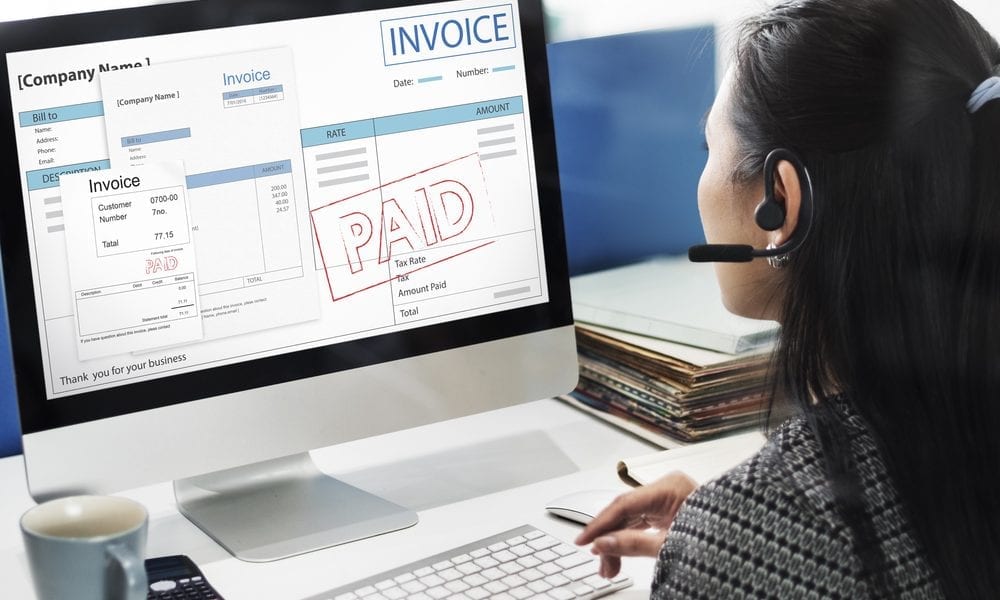Are you part of the nearly 25% of companies struggling with revenue that’s tied up in outstanding invoices? If so, look no further. With approximately $3.1 trillion owed in accounts receivables to US organizations, the importance of accounts receivable management and how you can optimize your processes to keep revenue flowing is more important than ever.
Consisting of policies and procedures, accounts receivable management allows you to know how much money is owed and how to manage overdue or non-payments. A key component of the order-to-cash process, proactive accounts receivable management helps to ensure invoices are paid on time, while enhancing the customer experience.
Why Accounts Receivable Management Processes Fail
If accounts receivable management puts you in the driver’s seat of maintaining a positive cash flow and improving customer interactions, why are nearly one-quarter of businesses experiencing ‘aging’ accounts and a high percentage of ‘write-offs’? It’s not a simple answer as there are a number of reasons why companies miss the mark when it comes to accounts receivable management, including:
- Accounts receivable management processes are weak or not enforced
- Credit is extended to high-risk customers, excessive discounts are applied, or payment terms are disregarded in order to win deals
- Past due accounts aren’t handled in a timely manner
- Bills and invoices contain errors and inaccuracies
- Inability to determine which accounts have outstanding balances
- Staff lacks proper training on how to handle delinquent customers
Carrying overdue account receivables has a cost. It can negatively affect your customer relationships, brand reputation, operating capital, cash flow, bottom line, and the worst possible scenario – result in bankruptcy.
Get Off the Unpaid Invoice Train
Essentially, there are five activities that are proven to maximize accounts receivable effectiveness, free up cash, and improve the customer experience.
1) Customer credit approval
Your ability to recover debt in a timely manner starts with the credit approval process. It’s important to remember that while making a sale looks good on paper, not all customers are created equal. Winning a customer that pays late or not at all will end up costing the company more in the long run.
To minimize risk, implement credit policies that take into consideration the full customer view. Their credit eligibility, credit limits based on the customer’s credit-worthiness, what constitutes overriding credit limits, credit terms, discounts, return policies, and length of time to approve or reject credit applications. Be sure to review the credit policies on a regular basis.
2) Customer master data
Maintain accurate customer master data in your billing and collection systems. This information typically includes the customer profile, what the customer can purchase, credit limits, payment terms, volume discounts, etc. To maintain quality, customer master data needs to be regularly reviewed to remove duplicate records and update inaccurate or conflicting data.
3) Billing/invoicing
Establish clear and concise billing/invoicing practices to ensure accurate invoices are sent on a timely basis. Every invoice you send should contain a clear measure of units purchased, pricing, payment terms, due dates, and be sent in the same manner each billing period – either mailed or electronic.
4) Cash application process
This is a component of the accounts receivable management process that applies payments to both the right customer and to the related invoices. However, this is not without its own challenges. Customers now have a variety of payment options that require retrieving payment from a variety of sources – checks, credit cards, electronic debit, ACH, PayPal, wire transfers, and sometimes telephone. To speed the process and ensure payments are allocated correctly:
- Apply payments to specific invoices, instead of the customer account or oldest invoice
- Apply payments on the day they are received
- Post journal entries prior to system cut-off dates
- Reconcile accounts frequently and quickly follow up on unidentified cash receipts
- Make it easy for customers to pay you by offering a customer portal
5) Collection process
Often a result of weak or neglected processes, money owed can (and does), get left on the table. Prior to starting the collection process, you need accurate and up-to-date accounts receivable reports. To optimize your collection processes:
- Incorporate training to ensure consistent collection efforts
- Make sure payment plans are in line with corporate collection policies
- Verify that discounts offered are mutually beneficial and are correctly implemented
- Automate the collection processes to reduce manual effort and errors
To know the effectiveness of your accounts receivable management processes, there are a handful of key performance indicators (KPIs) that you should track.
- Days sales outstanding (DSO): This metric measures the average time it takes to convert accounts receivable to cash. As defined by The Credit Research Foundation, DSO is composed of terms (the future & current receivables), delinquent invoices and operational errors, service and quality problems, disputes, and deductions.
- Collection effectiveness index (CEI): A measure of the collection of receivables, the effectiveness of your collections processes is determined by this figure. The closer you are to scoring 100%, the more effective your collection efforts are.
- Accounts receivable turnover ratio: A formula that is used to measure your effectiveness is extending credit and collecting debt.
Once you have a better understanding of how well your company is handling accounts receivable management processes, you’ll be in a better position to identify and tweak processes that need improvement. Alternatively, you may discover that the current state of your accounts receivable management processes contain significant gaps, and implementation of new processes is required.
Make Accounts Receivable Management Processes Work for You
Working hard for your cash is futile when invoices remain delinquent. Regardless of your billing model – subscription, usage-based, dynamic, or hybrid – you need a system that takes the effort out of accounts receivable management processes.
BillingPlatform gives you the power to streamline and automate your invoicing, payment, and collections processes. Our account management solution provides everything you need, including account overview, account hierarchy, billing management, and a customer portal to build and maintain profitable, long-term customer relationships. Let the experts at BillingPlatform show you more today.



